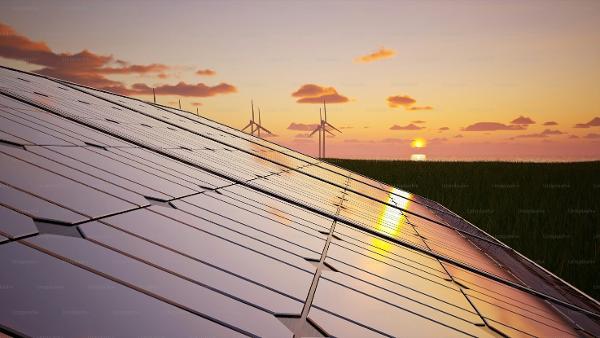Carbon capture and storage (CCS) deployment plans need to be developed with a greater emphasis on CCS’s essential role in allowing effective use of gas, coal, and other fuels such as biomass and waste in delivering energy security. ‘Effective’ can be summarised as getting the maximum value out of the minimum fossil fuel use and also progressively expanding the amount of CCS applied to that fossil fuel use to 100%, via direct capture at source or recapture from the atmosphere, in order to get net zero GHG emissions by 2050.
In the UK, as the government has stated, ‘a new Department for Energy Security and Net Zero has been tasked with securing our long-term energy supply, bringing down bills and halving inflation. The move recognises the significant impact rising prices have had on households across the country as a result of Putin’s illegal war in Ukraine, and the need to secure more energy from domestic nuclear and renewable sources as we seize the opportunities of net zero.’
The overall imperative is clearly to minimise the use of natural gas (natural gas in the UK context – coal would also be relevant elsewhere) and to maximise the use of non-fossil electricity, while at the same time maintaining a 24/365 supply of electricity. To achieve this, fossil fuels should be used as effectively as possible, in ways that minimise the total energy that they supply and that reserve the use of fossil fuels for times when, or applications where, nothing else is available. This is not the same as totally phasing out fossil fuels; for near-instantaneous, on-demand supply of electricity and heat, natural gas offers capabilities that are currently unique and likely to remain so for the foreseeable future while coal power plants have unparalleled capabilities for guaranteed on-site fuel availability. Liquid hydrocarbon fuels also have unique advantages for some applications due to their intrinsic properties and, with CO2 recapture from the atmosphere, can be used with net zero GHG emissions.
Hydrogen is being promoted as a replacement for natural gas but if made from natural gas with CCS – so-called ‘blue hydrogen’ – then 40-50% extra natural gas would need to be consumed on site to deliver the same useful energy to the consumer (see a recent review for the UK Environment Agency). If made using renewable or nuclear electricity – ‘green’ or ‘pink hydrogen’ – then losses in converting electricity to hydrogen and back to heat or electricity will be similar. And, for home heating, heat pumps, which use electricity to upgrade free natural heat from the environment, have been estimated to use a sixth of the electricity of green hydrogen for a boiler.
But sufficient non-fossil electricity for heat pumps will not be available all of the time, which is where the retention of domestic gas boilers for peaking use – a ‘hybrid’ heating solution – represents effective use of gas and of the existing gas distribution infrastructure. Natural gas or coal power plants will also have to be used at times when insufficient renewable, nuclear, imported or previously-stored electricity is available to ‘keep the lights on’. CCS may be used to give net zero CO2 emissions on some of these power plants, particularly ones used for combined heat and power – see below - by capturing the CO2 directly from the plant chimney. But, for infrequent and distributed emissions from any type of fossil fuel use, CCS via recapture and permanent storage of the equivalent amount of CO2 from the atmosphere (via biomass energy with CCS – BECCS, beneficially combined with coal power plants with CCS – or Direct Air Carbon Capture and Storage - DACCS) is likely to be cheaper. Very importantly, while the use of natural gas and coal can be expected to decrease over time, the associated engineered carbon dioxide removal (CDR) plants, particularly for DACCS, will retain their value and continue to be operated at maximum throughput to help deliver net zero.
A CO2 capture research unit being used to develop better net zero performance

Source: Translational Energy Research Centre
CCS, suitably designed and operated, can also contribute both to energy security and net zero in other ways. Examples include:
a) using all gas (and coal and biomass and waste, where possible) fired power plants with point source capture as combined heat and power (CHP) plants that also provide heat for CO2 capture from industry such as cement manufacture, saving large amounts of fuel compared to simple boilers;
b) making all suitable point source CO2 capture plants interruptible, using solvent storage to allow continued operation in many situations, to allow either a rapid boost in power output (for power plants) or a rapid reduction in electricity demand (for industrial CO2 capture) and thus supporting grid security;
c) using the limited amounts of sustainable biomass and wastes only in applications with CCS to give a net CO2 removal, with biomass power plants also be able to be switched off for periods when electricity is not required;
d) developing effective direct air capture options that don’t rely on natural gas combustion but are able to use intermittent electricity or nuclear waste heat for energy, and which also exploit synergies with the ‘conventional’ CCS infrastructure.
All of the above represent some changes from CCS deployment scenarios envisaged pre-COVID and pre-Ukraine but this is a natural response to greatly changed circumstances on energy security. The climate imperative has not changed, however, nor has the need for CCS, which is essential to put the ‘net’ into ‘net zero’. If governments and industry explore how CCS deployment can be improved to better deliver both energy security and net zero, in the specific context of the local energy system that they are starting with now and that they will have to use continuously in the transition to net zero, then they will find the effort well-rewarded.
Jon Gibbins is a Professor of Carbon Capture and Storage at University of Sheffield and Director of UK CCS Research Community Network




















